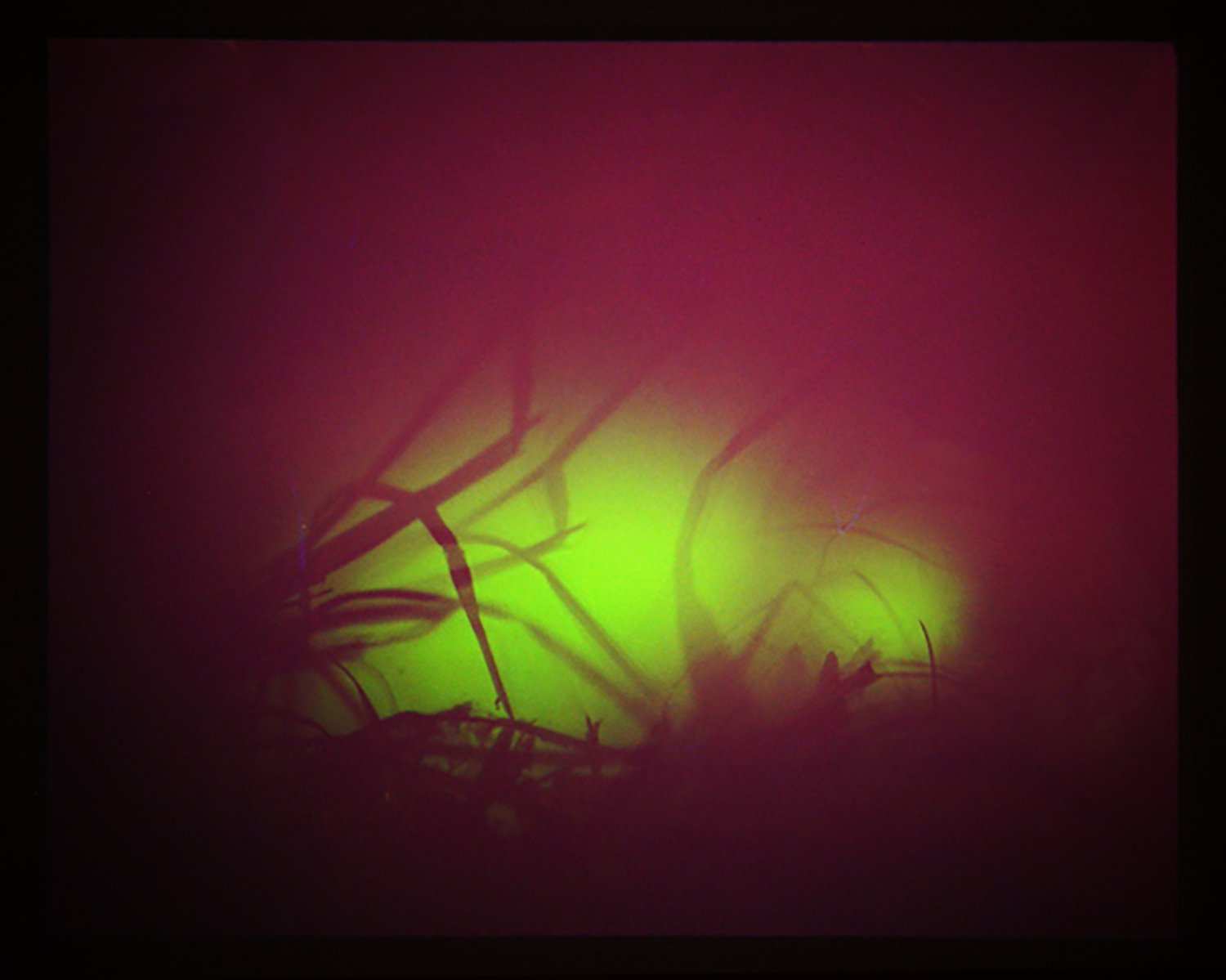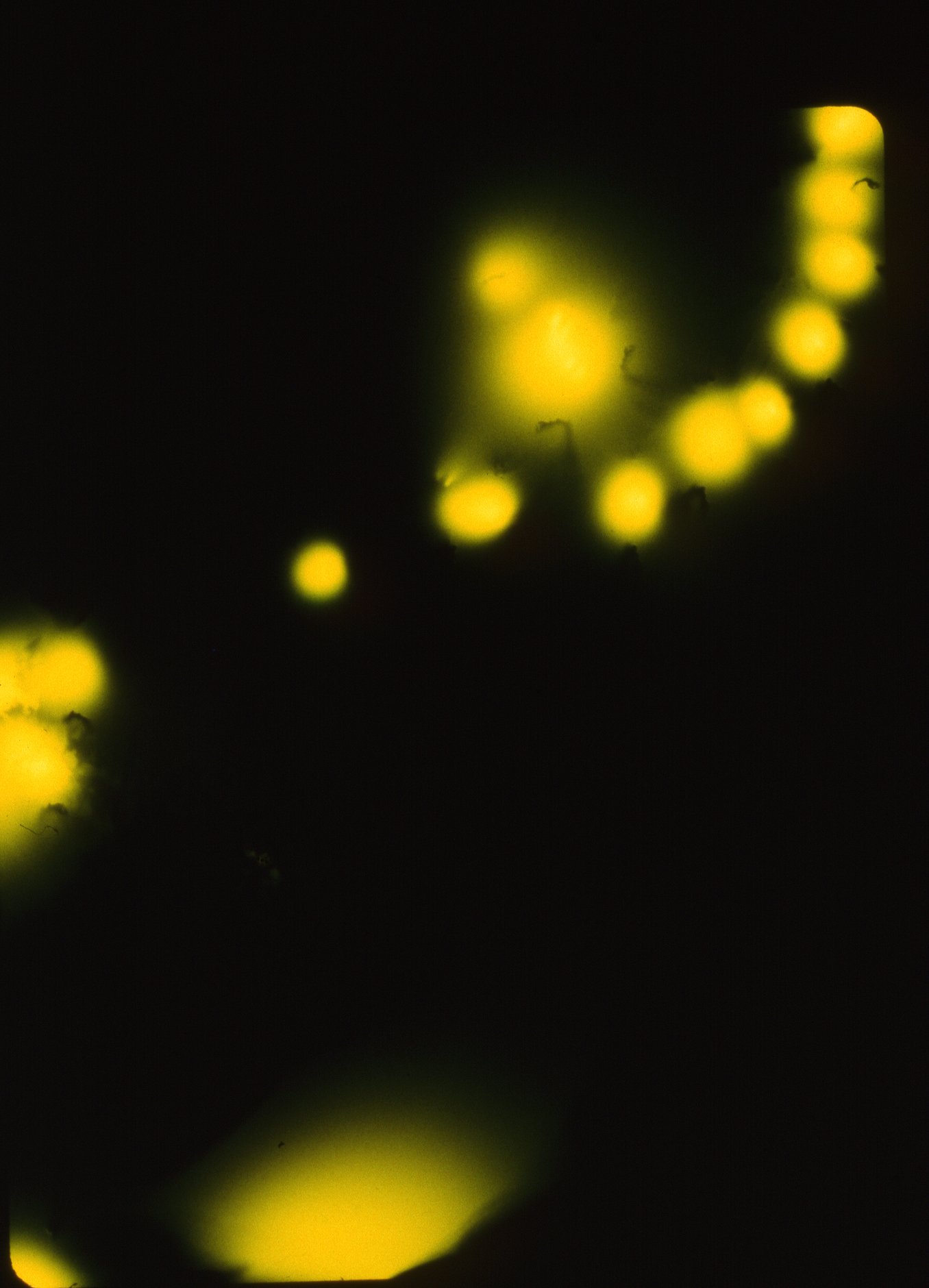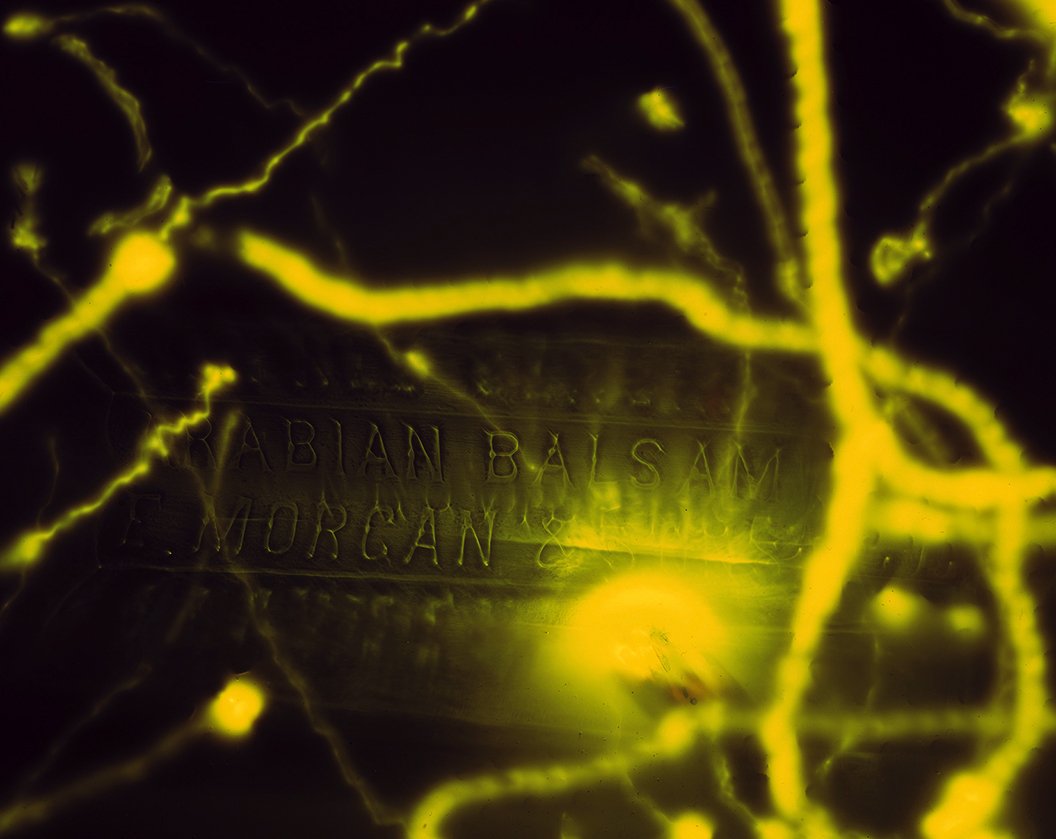
Bioluminescent Series
This Series was created in collaboration with Ahmed Salvador.
The process involved going out into a wooded area with just, at first, a plastic jar complete with a lid poked with holes. It seemed innocuous enough, we were catching fireflies: reliving an exploratory part of childhood. Moreover, we were combining that nostalgia with the technical knowledge we had acquired as photography majors at the University of the Arts in Philadelphia. There is also a certain homage to the early experimenters of photography and the camera-less images they created.
The question was, how do we capture that light, that experience? At that time, the mid to late 90's, digital photo technology was not able to capture a field of fireflies at the click of a button. One couldn’t do it with a lens exposure, especially not a long exposure. It was unphotographable. We had to create the instant by eliminating the lens and letting the concentration of firefly light expose directly on film.
With said jar, we had to pick a moonless night, no streetlight or other such ambience. We used 4x5 sheet film, reversal or chrome film at that, because early on we knew that any kind of printing or enlargement would spoil the magic of that light. It was agreed we would use light boxes to showcase the image: one step removed from the field experiment.
The film was wrapped around the jar. The fireflies were caught and placed inside. We waited, and they blinked, they exposed themselves at random. They even exposed their legs. Later, we used bigger 8x10 sheet film and laid that flat in boxes, complete with accidental (and intentional) plants gathered during the acquisition process. It created depth at times, a fake lens shot that was uncannily prescient, a gesture toward the high sensitivity in today's cameras. A diorama of something invisible, except in memories.
You can follow this project in real time on Instragram.
Installation View
Firefly 6 – 8”x10” color transparency with light box
Firefly 8 – 8”x10” color transparency with light box
Firefly 9 – 5”x4” color transparency with light box
Firefly 11 – 5”x4” color transparency with light box
Firefly 12 – 8”x10” color transparency with light box
Firefly 13 – 5”x4” color transparency with light box
Firefly 10 – 5”x4” color transparency with light box
Firefly 7 – 5”x4” color transparency with light box















